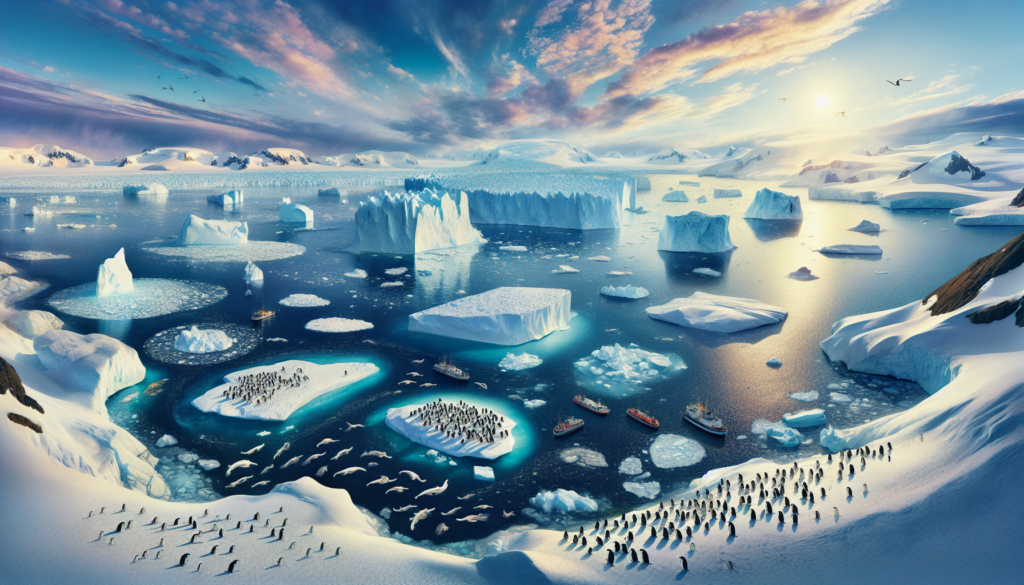Introduction
The Antarctic waters are some of the most remote and least understood regions of our planet. These frigid seas, encased in ice for much of the year, are home to a wide array of unique marine organisms. However, the Antarctic marine landscape is undergoing rapid changes due to human-induced climate change. This article delves into the current state of the Antarctic marine environment, the impacts of climate changes, and the predictions for the future of this icy world.
The Unique Antarctic Marine Ecosystem
The Southern Ocean surrounding Antarctica is a crucial component of the Earth’s climate system and hosts a remarkable diversity of marine life. Characterized by extreme conditions, the marine ecosystem supports creatures uniquely adapted to cold temperatures, limited light, and seasonal variations. From flourishing phytoplankton blooms that fuel the food web, to the majestic blue whales and Emperor penguins, the Antarctic marine life is both diverse and delicate.
Impact of Climate Change
Climate change is dramatically altering the Antarctic marine landscape. Rising global temperatures are leading to the melting of sea ice at unprecedented rates. This, in turn, affects the habitat and living conditions for numerous marine species. The loss of sea ice reduces the surface area for algae to grow, which is crucial to the Antarctic food chain. Predators such as seals and penguins, which rely on ice platforms for breeding and hunting, are also deeply affected.
Shifts in Biodiversity
Changes in sea ice dynamics are causing shifts in the distribution and abundance of marine species. Some species are migrating towards the poles or deeper waters in search of suitable living conditions. Invasive species, previously restricted due to the cold, are now entering Antarctic waters, competing with native species for resources. This alters the balance of the ecosystem and could lead to the loss of endemic species.
Conservation Efforts
In response to the ongoing changes, international efforts are being made to protect the Antarctic marine environment. The establishment of Marine Protected Areas (MPAs) aims to reduce human impact and give the ecosystem a chance to adapt to the changing conditions. Global agreements like the Protocol on Environmental Protection to the Antarctic Treaty also play a significant role in preserving this critical region.
Future Predictions
The future of the Antarctic marine landscape is uncertain and largely dependent on global climate policies. If greenhouse gas emissions continue at the current rate, the Antarctic region could witness even more dramatic changes in ice cover and marine biodiversity. Conversely, effective global climate action could mitigate some of these impacts, preserving the Antarctic marine ecosystem for future generations.
Conclusion
The changing Antarctic marine landscape is a clear indication of the broader impact of climate change on our planet. The unique and fragile ecosystem of the Southern Ocean is at a crossroads. Human actions today will determine whether future generations can witness the astounding biodiversity of these icy waters. Sustainable practices and robust conservation strategies are essential to safeguard the Antarctic marine environment.

